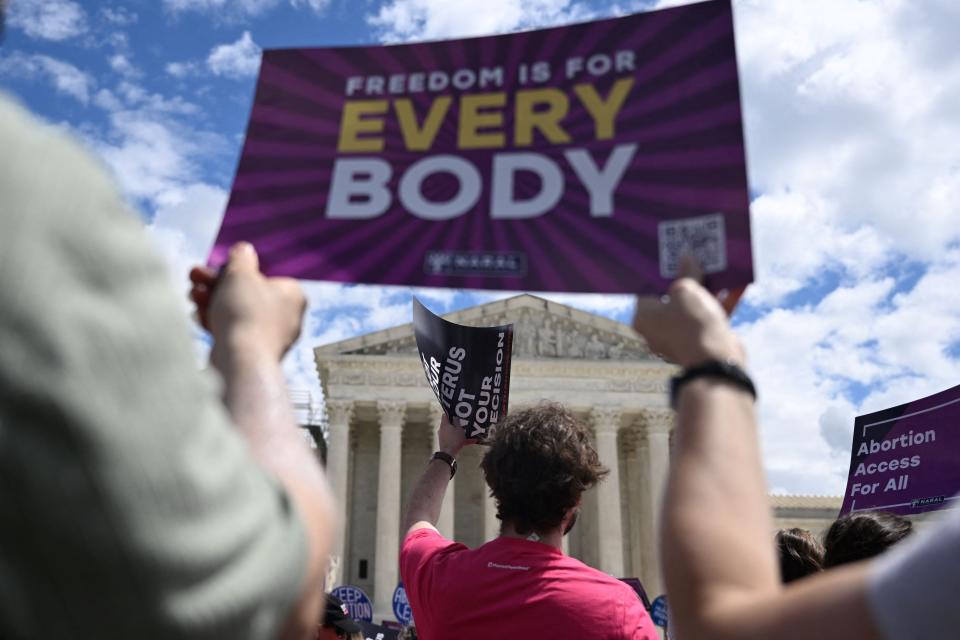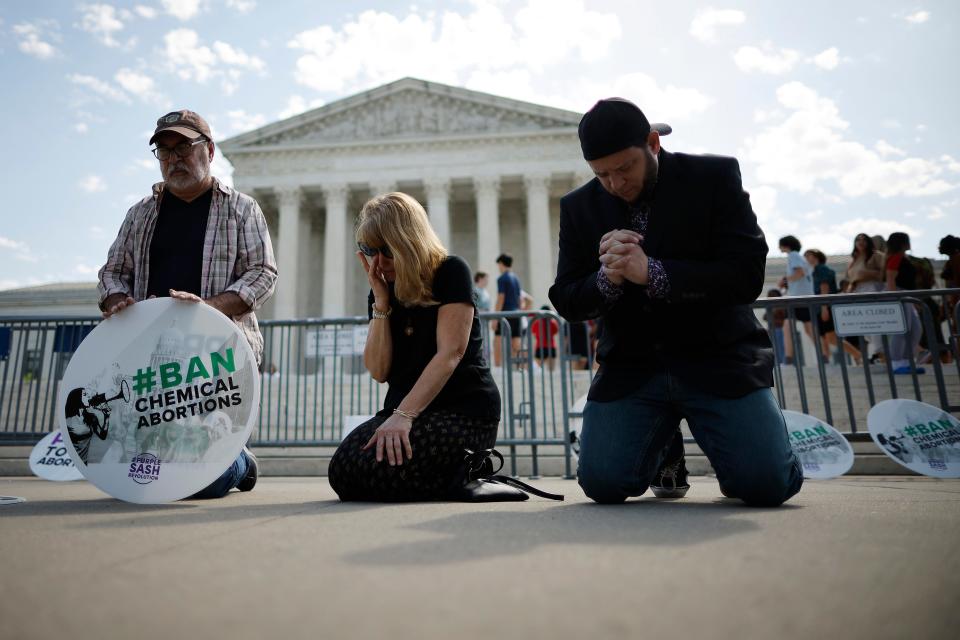'Incalculable' impact: Three ways the Supreme Court abortion decision changed the USA
Correction: An earlier version of this story misspelled Nancy Northup's name.
WASHINGTON – When the Supreme Court handed down its watershed abortion decision last year to overturn Roe v. Wade, the five conservative justices in the majority were not blind to the upheaval the ruling might spark across the nation.
But back then, no one knew exactly what the response might look like.
“We do not pretend to know how our political system or society will respond to today’s decision,” Justice Samuel Alito wrote for the majority. “And even if we could foresee what will happen, we would have no authority to let that knowledge influence our decision.”
As Americans approach the one-year anniversary Saturday of the decision in Dobbs v. Jackson Women's Health Organization, the fallout has come into sharper focus even as the political and legal ramifications continue to evolve: Only rarely has a Supreme Court decision had such a profound impact so quickly on the lives of so many people.
Poll: Support for legal abortion rises a year after Roe v. Wade overturned
“The impact has been incalculable,” said Sara Rosenbaum, a professor of health law and policy at George Washington University. “It's like somebody dropped a nuclear bomb into public health.”
The Dobbs decision, which upheld a Mississippi ban on most abortions after 15 weeks of pregnancy, has led to the stripping of access to abortion in more than a dozen states, altered the political narrative over one of the most divisive issues in the country and changed the way millions of Americans view the nation’s highest court – for better or worse.

Access: Fourteen states and counting ban abortion
In the days before the Supreme Court decision on June 24 last year, virtually every state allowed people to obtain an abortion at least until viability – the point when a fetus can survive outside the womb, or about 24 weeks into a pregnancy. That was the standard set for the nation by the Supreme Court in the 1992 decision Planned Parenthood v. Casey.
Today, post-Dobbs, abortion is largely unavailable in 14 states, and courts have blocked enforcement of bans approved in several other states, according to the Guttmacher Institute, a research group that supports abortion rights and tracks reproductive issues. Those bans, abortion rights advocates say, have had an outsized impact on those unable to travel out of their home state.
Tracker: Race, religion and debt. Here are the biggest cases pending at the Supreme Court
“It’s an incredible hardship and it's fallen hardest on the people less able to travel,” said Nancy Northup, president of the Center for Reproductive Rights, a group that represented the Mississippi abortion clinic in the Dobbs case. The decision, Northup said, has also made clear that it’s “dangerous to be pregnant in these states with a wanted pregnancy” if women are unable to access an abortion if complications arise.
Conservatives, on the other hand, view the Dobbs decision as a historic victory, the result of a decadeslong campaign to overturn the 1973 Roe decision and put the issue back in the hands of elected state leaders. Conservative lawmakers and governors who have banned abortion or severely limited access to it, they say, have done so in response to the will of their voters.
“From the pro-life perspective, we're able to celebrate that, today, nearly half the country at 24 states, has honored the will of their people and now have pro-life protections in place,” said E.V. Osment with the anti-abortion group Susan B. Anthony Pro-Life America.

Politics: A surprise boost for abortion rights advocates
And yet, so far, Dobbs appears to have energized the left more than the right. Voters in conservative states like Kentucky, Kansas and Montana have rejected anti-abortion ballot initiatives. Congressional Democrats likely held off a “red wave” in the 2022 midterm election by running heavily on the abortion issue.
And then there are the polls.
One in 4 Americans says state efforts to impose strict limits on abortion access have made them more supportive of abortion rights, according to a USA TODAY/Suffolk University poll this week. By almost 4-1, 23%-6%, those whose views on abortion have changed in the past year said they have become more supportive of legal abortion, not less supportive. That includes more women than men, more Democrats than Republicans, and more younger voters than seniors.
In other words, Northup said, the decision galvanized support for abortion rights.
“The engagement of the broader public post-Dobbs has been a huge change,” she said.
That’s part of the reason why Democrats continue to tout the issue. Sen. Patty Murray, D-Wash., will lead an effort by her party Wednesday to advance abortion-related measures on the Senate floor, a push that will not likely succeed but that is designed to call attention to the impact of Dobbs.
Vice President Kamala Harris is expected to speak on abortion in North Carolina on Saturday.
Anti-abortion advocates counter that several Republican governors who had clear records of opposition to abortion, including Gov. Ron DeSantis of Florida and Gov. Brian Kemp of Georgia, won reelection last year. And they point to other polling that shows a majority of Americans want some limitations on access to the procedure.
“I certainly hope that those pro-lifers who ran and won successfully and are now hiding under their desks, hoping the shrapnel will never hit them will come forward and stand up and speak up,” Kellyanne Conway, a Republican pollster and former adviser to former President Donald Trump, said Tuesday on a call with anti-abortion advocates.
Courts: Supreme Court remains unpopular with most Americans
The decision – and the unprecedented leak of a draft opinion months earlier – may have damaged the relationship between the nine justices of the Supreme Court. Polls suggest it also harmed the court’s reputation with millions of Americans.
The Supreme Court took a nosedive in approval following the decision last year, a drop driven almost entirely by anger at the decision from the left. Just more than 4 in 10 Americans approved of the job the Supreme Court is doing compared with 56% who disapprove, according to a Marquette Law School poll earlier this year. Roughly two-thirds of Republicans approved of the high court.
And while the Dobbs decision may have taken the constitutionality of abortion itself off the court’s docket it also opened up new legal battles, such as access to the abortion pill mifepristone. The high court already dealt with medication abortion once this year, allowing the drug to remain on the market for now without restriction. The issue is almost certain to return following a pending decision from the New Orleans-based U.S. Court of Appeals for the 5th Circuit.
Rosenbaum predicted it will take considerable time to sort out all of the implications of Dobbs.
“It’s as if they didn’t understand all of what they would set in motion,” she said.
Supreme Court ethics issues: Alito took private jet trip for Alaska fishing trip in new Supreme Court ethics revelation
Contributing: Susan Page, Rachel Looker, Miles J. Herszenhorn
This article originally appeared on USA TODAY: Abortion: How last year's Supreme Court ruling in Dobbs changed USA

